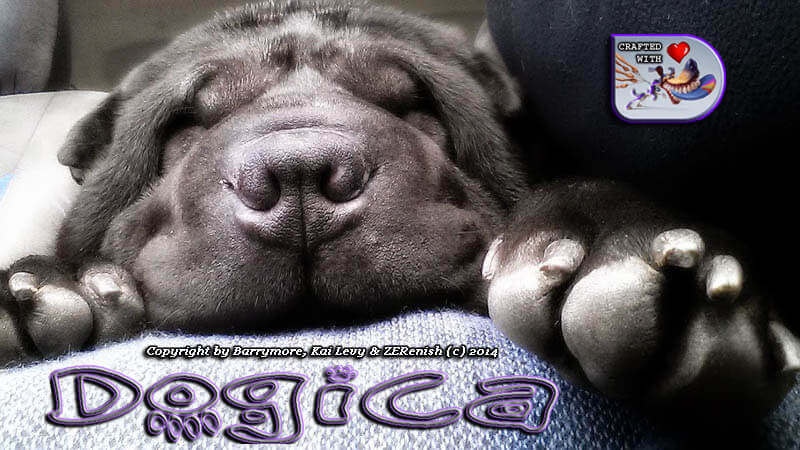

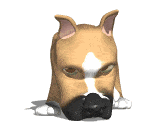

 Dog Age vs Human Age
|
| Name | Age | Breed | Country of death |
|---|---|---|---|
| Max | 29 years, 282 days | Beagle, Dachshund, Terrier | United States |
| Bluey | 29 years, 160 days | Australian Cattle Dog | Australia |
| Butch | ≥ 28 years, 150 days |
Beagle | United States |
| Bramble | 27 years, 211 days | Border Collie | United Kingdom |
| Adjutant | 27 years, 98 days | Labrador Retriever cross | United Kingdom |
| Pusuke | 26 years, 248 days | Shiba Inu mix | Japan |
| Sugar | 24 years, 360 days | N/A | United States |
| Piccolo | 23 years, 86 days | Mutt | Italy |
| Kathy T. Dog | 22 years, 29 days | Mutt | United States |
| Mister | 21 years, 332 days | Shepherd mix | United States |
| Chanel | 21 years, 114 days | Dachshund | United States |
| Otto | 20 years, 334 days | Dachshund-Terrier cross | United Kingdom |
| Seamus | 20 years, 298 days | Toy Poodle | United States |
| Sotirakis | 20 years, 280 days | Stray | Greece |
| Megabyte | 20 years, 265 days | Chihuahua | United States |
| Winston Rha | 20 years, 154 days | Schnoodle | United States |
| Willie | 20 years, 106 days | Jack Russell Terrier | United Kingdom |
| Scolly | 20 years, 33 days | Dachshund | Mexico |
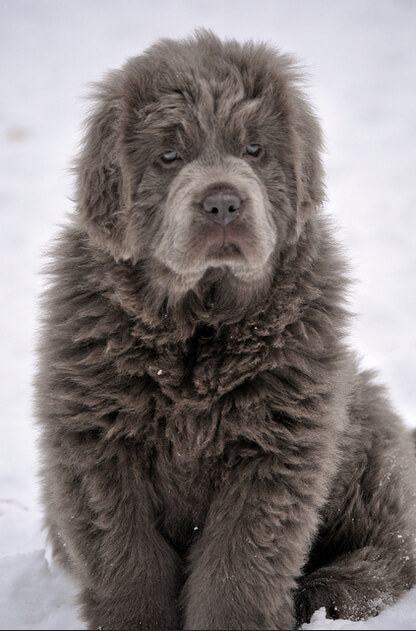
If you own a dog, you've heard this rule: 1 year for Fido equals 7 years for you. Turns out, the math isn't that simple. Dogs mature more quickly than we do early on. So the first year of your fuzzy friend's life is equal to about 15 human years.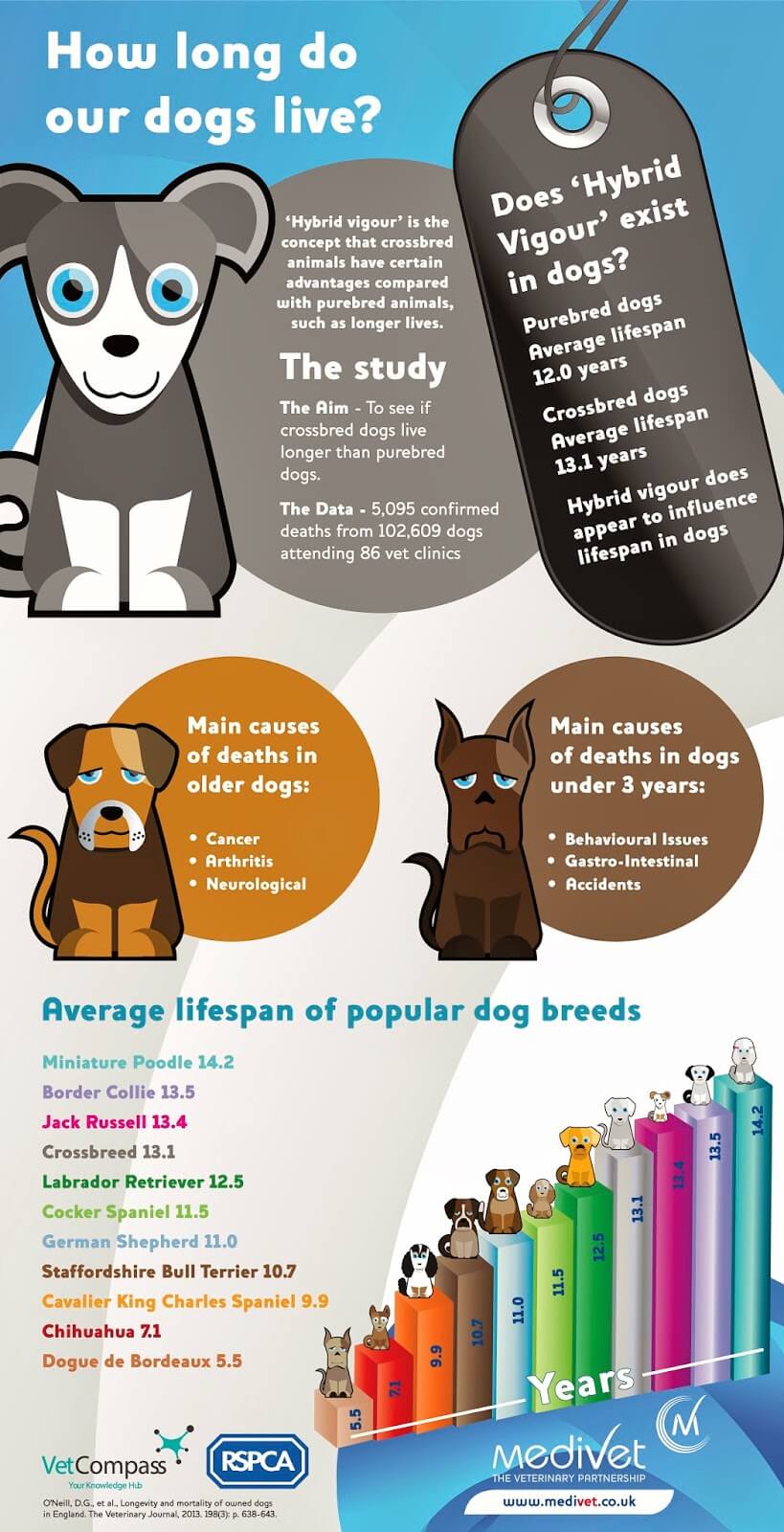
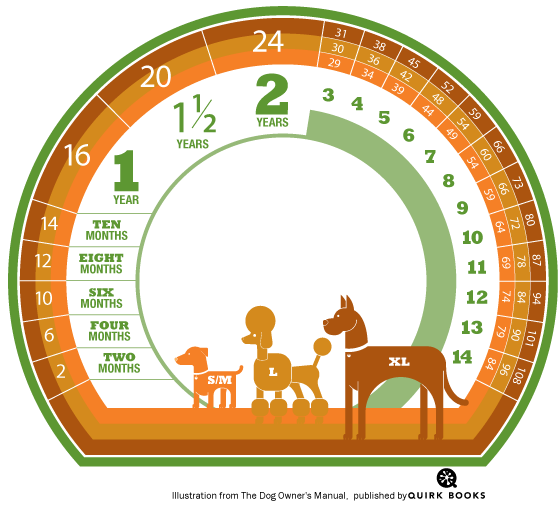
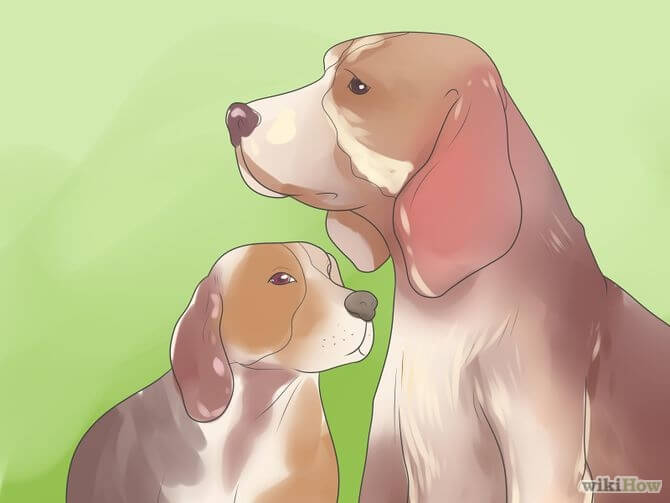
Your vet can guess her age based on a complete physical exam or tests that look at bones, joints, muscles, and internal organs. Senior dogs might show some specific signs of aging.
Teeth Condition
Cloudy eyes
Gray hair.
It starts around the muzzle then spreads to other areas of the face, head, and body.
Loose skin
Stiff legs

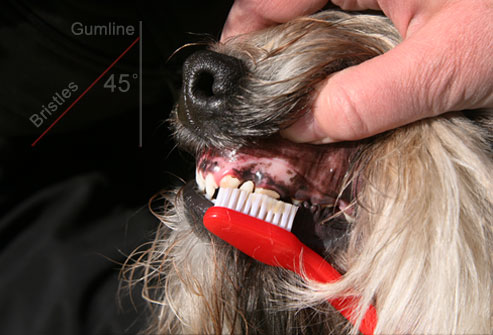
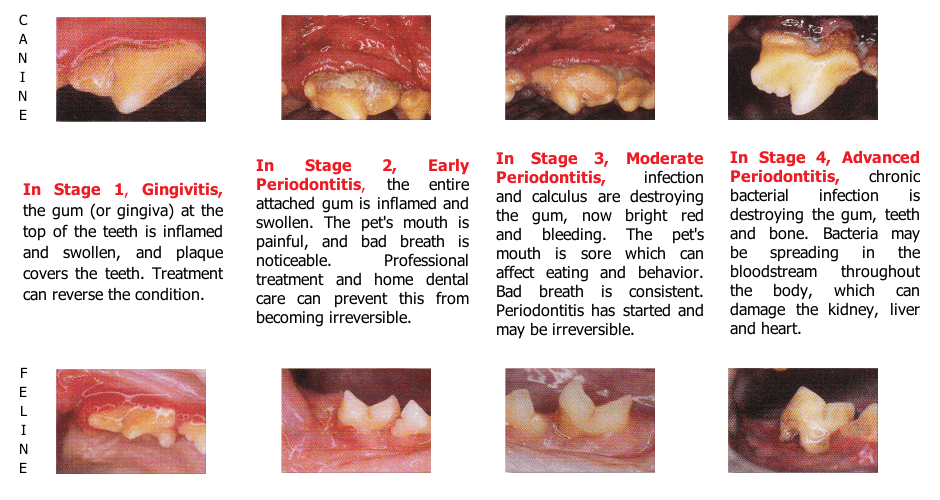
Teeth should give you a rough idea of your dog's age. These guidelines will vary from dog to dog, and they also depend on the kind of dental care (if any) she had before you got it
By 8 weeks: All baby teeth are in.
By 7 months: All permanent teeth are in and are white and clean.
By 1-2 years: Teeth are duller and the back teeth may have some yellowing.
By 3-5 years: All teeth may have tartar buildup and some tooth wear.
By 5-10 years: Teeth show more wear and signs of disease.
By 10-15 years: Teeth are worn, and heavy tartar buildup is likely. Some teeth may be missing.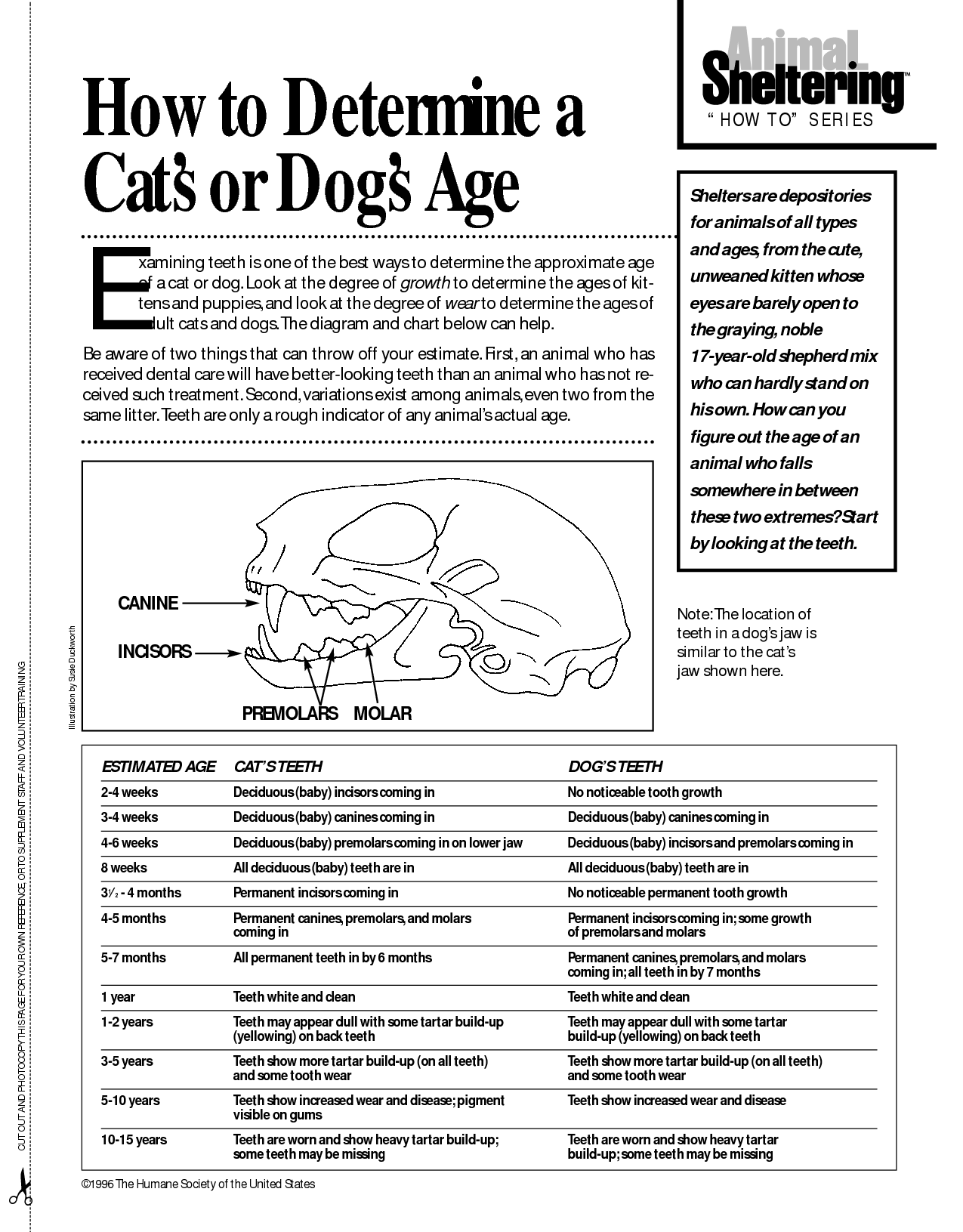
In adult dogs, examining the teeth will give you a very rough estimate of the dog's age. In puppies, the age can be estimated with a bit more accuracy because puppies usually shed their baby teeth at a predetermined age.
WATCH VIDEO
For dogs under the age of six, you can often judge the age of the dog by the condition and number of his teeth. Puppies have just 23 baby teeth, which are replaced by the 42 permanent teeth over the course of puppyhood. Starting at the age of one year, the incisors begin to wear down, beginning with the teeth in the very front of the mouth, with the wear and tear working their way back through the incisors.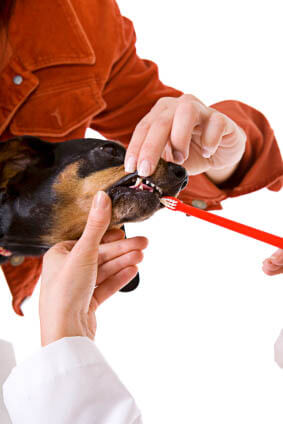
It can be difficult to tell how old a dog is once he loses that "puppy look". Your veterinarian knows how to age a dog by its teeth and can tell, within a few weeks to a month, how old your puppy is by looking at his teeth. Once your dog has all his permanent teeth in, it can be more difficult to accurately guess his age.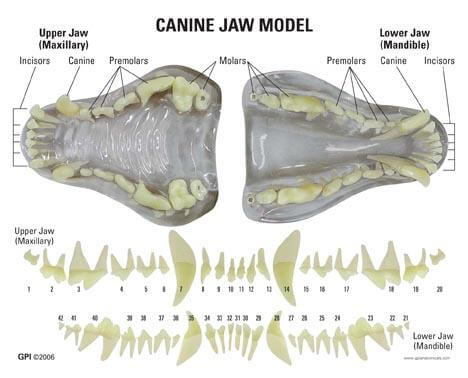
How to age a dog by it's teeth
Baby Teeth A dog's baby teeth are also called deciduous teeth. This simply means that they will fall out as the adult teeth grow in, just like in people. You can roughly tell a dog's age by which baby teeth they have. Most dogs will get their baby incisors - the small teeth in the front of the mouth, all between the time they are 3-5 weeks old. There are three sets of incisors, for a total of 6 incisors on the top and 6 on the bottom.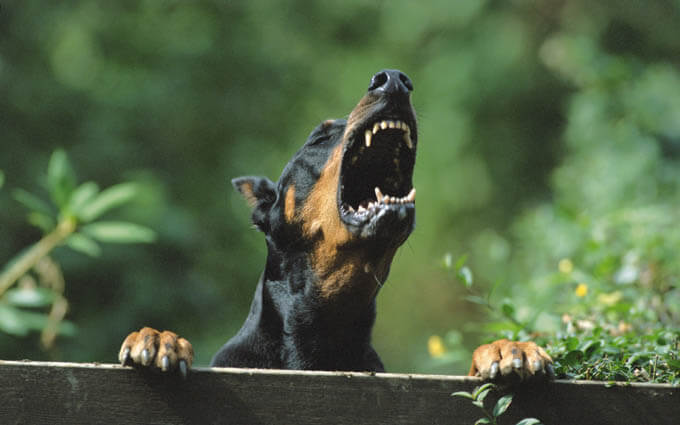
Usually, the top and bottom teeth come in at the same time, and the outside set of incisors comes in first. Most dogs will get their baby canine teeth between 3-4 weeks old. The baby premolars come in next. There are three sets of baby premolars on the left (top and bottom) and on the right (top and bottom), for a total of 12 baby premolars. All of these teeth come in between 4-6 weeks old.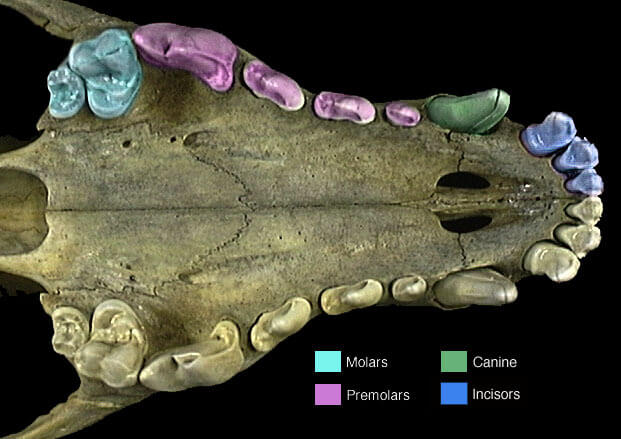
Adult Teeth As dogs get a little older, their baby teeth start to fall out and their adult permanent teeth start to come in. You might find a lost baby tooth, but most of the time dogs swallow their baby teeth. This does not cause any problems for them.
Incisors and Canines
The deciduous (baby) and permanent incisors are difficult to tell apart, because these teeth are so small. Typically, the inside pair of incisors comes in first around 4 months old, the middle pair comes next around 4 and a half months old, and the outside pair of incisors comes in last around 5 months old. The deciduous canine teeth are smaller than the permanent teeth. The permanent canine teeth come in between the time a dog is 5-6 months old.
Premolars and Molars
Premolars and molars are farther back in your dog's mouth, and you may not notice when the permanent premolars and molars come in. Your vet can take a closer look inside your dog's mouth, and may be able to use these teeth to estimate how old your dog is. There are only 3 baby premolars, but there are 4 permanent premolars on the top and on the bottom on each side. The first premolar is very small, and comes in between 4-5 months of age. The other three premolars all come in between 5-6 months of age. Dogs have no baby molars, but they do have 2 permanent molars on each side on the top and 3 permanent molars on each side on the bottom. The first one, closest to the front of the mouth, comes in between 4-5 months old. The second one comes in between 5-6 months old. The third molar, farthest to the back of the mouth on the bottom comes in between 6-7 months old.
Old Dog Teeth
Once your dog is older than 6-7 months old, it can be difficult to tell how old they are. By looking at the amount of wear and tartar accumulation on your dog's teeth, your veterinarian may be able to estimate how old your dog is. For example, after about 5-6 years old most dog's canine teeth will start to become less pointed. But if your dog chews on hard toys or rocks, this change can happen sooner. As most dogs get older, they start to have more and more tartar accumulation on the outside surfaces of their teeth. Some dogs tend to have "bad mouths" and have more tartar accumulation earlier, where some dogs have "good mouths" and may not have as much tartar accumulation until they are much older.
Do you know
how old your dog is?
Every dog will get their teeth at a slightly different time, but these are good estimates. Call us or come in to talk to our veterinarians or veterinary technicians about the routine vaccinations we recommend for puppies, and to discuss having your new puppy spayed or neutered when she or he is old enough.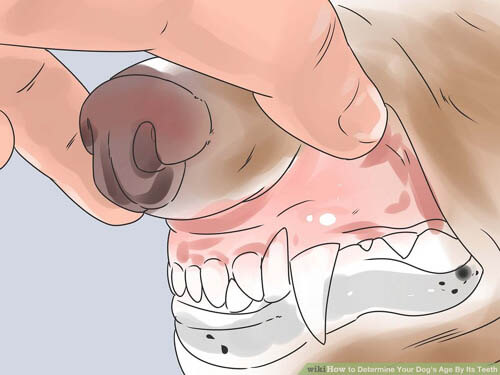
DETERMINE DOG AGE BY TEETH
Evaluate a puppy's age by assessing its tooth growth. Teeth grow fast at the early puppy stage. Because the change is so rapid, this is the most accurate time to be able to tell a dog's age. Count the type and position of your puppy's teeth to estimate their age.
Newborn puppies are born without their teeth erupted from the gums. At certain intervals teeth will erupt. The first baby teeth to appear will generally be the canine teeth at 3-4 weeks of age. At 4-5 weeks of age the two middle incisors erupt. At 4-6 weeks the first two molars erupt. At 5-6 weeks the third incisors erupt. And at 6-8 weeks of age the third molar erupts. The premolars do not appear until much later.
At eight weeks and older puppies will have 28 baby teeth. At around 4 months of age the puppy will begin to lose its baby teeth as the adult teeth will erupt. Most times, puppies swallow these teeth but occasionally the owner will find a shed baby tooth or see the gum line is bleeding where a tooth has erupted. Just as with baby humans, puppies at this stage will love to chew on things!
At 4-5 months the adult incisors, first premolar, and first molar will erupt. At 5-6 months the adult canine, premolars 2-4, and second molars erupt. Finally, at 6-7 months the adult third molar will erupt. All together there will be 42 adult teeth.
Evaluate the condition of your adult dog's teeth to estimate its age. In the first two years of adult life, the teeth are generally white with very little wear. By the end of the second year the white will have dulled and tartar will begin building up. This will cause yellowing on the back teeth. Eventually wear and tear and accumulation of plaque and bacteria will begin to age the teeth. This is how we estimate an adult dog's age.
By age three, most dogs will have some signs of tooth disease: accumulation of yellow and brown tartar, reddened gums, bad breath. Of course, dogs with owners who brush their teeth daily and who take their dog to the dog dentist regularly will not have these signs of wear and tear and disease.
After three to five years the yellowing will increase and be visible on all teeth. There will be noticeable tooth wear. As the dog ages, teeth will continue to show increase wear. The gums may recede from the teeth leaving roots exposed which may lead to tooth loss. The teeth staining will become more pronounced turning the yellow to brown color.
From 5 to 10 years, teeth will continue to show increased wear. Signs of disease will likely appear. By 10 to 15 years, some teeth may be missing and decay will be widespread.

Change is a normal part of the aging process. Not every dog will experience every possible age related change, of course. As I write this, I have two 10-year-old male Australian Shepherds lying beside my desk They are aging differently. The way your individual dog ages will be affected by his general health and environment, and his family heritage. His breed or combination of breeds will also play a role in the changes you should expect. Some breeds tend to be more prone to heart problems, for instance, while others are susceptible to cancer.
You and your veterinarian can help your aging dog as changes occur. Regular checkups to diagnose problems early, and changes in your dog's care and environment, may help him live longer and healthier. Even if he seems to be in terrific health, when your dog reaches about five and six years old, talk to your vet about early screening in addition to regular examinations.
Changes in Nutritional Needs
An older dog generally requires fewer calories than he did when he was younger. If you continue to feed him as much as you used to, he'll get fat. Don't let that happen! Obesity is a serious health threat and can contribute to many problems, including heart disease, arthritis, and other debilitating conditions. Some older dogs require nutritional supplements. Speak to your veterinarian and read about canine nutrition to determine which, if any, supplements may help your dog age more comfortably.
Changes in Skin, Coat, and Nails
Many dogs get gray hair as they age, particularly on the muzzle and around the eyes. Their coats may also become thinner, although that can be a sign of problems other than advancing age. If your dog's coat changes suddenly or substantially, tell your veterinarian. Regular grooming will let you check for lumps, bumps, and other signs of potential trouble. Benign tumors and fatty deposits are common in older dogs, but cancerous tumors can also occur. Have any new bumps or suspicious areas on the skin checked by your veterinarian.
Your dog's nails may become more brittle as he gets older. If that happens, speak to your vet about nutritional supplements that may help. You may need to trim your dog's nails more frequently as he becomes less active. If your dog's nails are very brittle, be careful when clipping or consider learning to use a grinder. You don't want a nail to split into the quick. Ouch!
Arthritis and Muscular Problems
Arthritis is common in older dogs. Its effect on your dog's life can vary from mild stiffness after sleeping to debilitating pain that keeps him from doing many things he used to do with ease. Many people find that glucosamine and other supplements seem to make their arthritic dogs more comfortable. Anti-inflammatory pain relievers are often recommended as well. Consult your veterinarian before treating your dog, though, as some medications may interfere with one another or be harmful if your dog has other medical conditions. Special "egg-crate" orthopedic beds designed to distribute weight evenly may make your dog more comfortable.
Dental Disease
Dental disease is common in older dogs. Routine dental care is more important than ever for dogs as they age. Don't assume that your dog should have bad breath,he shouldn't. Bad breath often indicates gum disease, which can affect the heart, lungs, kidney, and other organs and contribute to life-threatening complications. Proper oral hygiene will protect your aging dog from gum disease and also give your veterinarian a chance to examine your dog's mouth for telltale signs of disease. Professional tooth cleaning should be scheduled at least once a year or more frequently if necessary. Regular brushing at home will also help maintain your dog's oral health, as will chew toys designed to help keep teeth and gums clean and healthy.
Heart, Kidney, and Liver Problems
As your dog ages, his internal organs may lose some of their ability to function properly. His heart will probably become less efficient, and the heart valves particularly the mitral valve will lose elasticity. Some changes are a normal part of aging, but if your dog had indications of heart problems when younger, or if his breed is prone to heart problems, talk to your vet about screening and care as he ages. Radiographs (x-rays), electrocardiograms (EKGs), and echocardiograms are used to diagnose heart disease.
The risk of kidney and liver disease also increases as your dog ages. Unfortunately, by the time symptoms of a kidney or liver problem become noticeable, the disease may be well advanced. Speak to your vet about including screening tests for kidney and liver functions as part of your aging dog's regular exams. If your dog needs to be anesthetized for any reason, pre-anesthesia screening is also advisable.
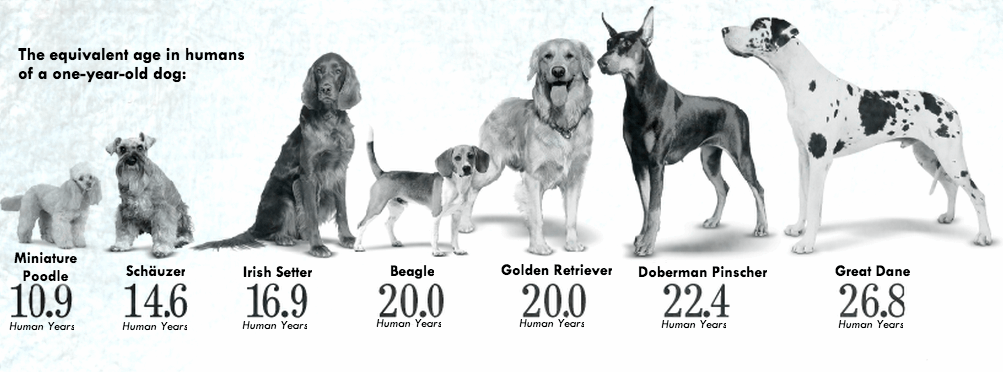
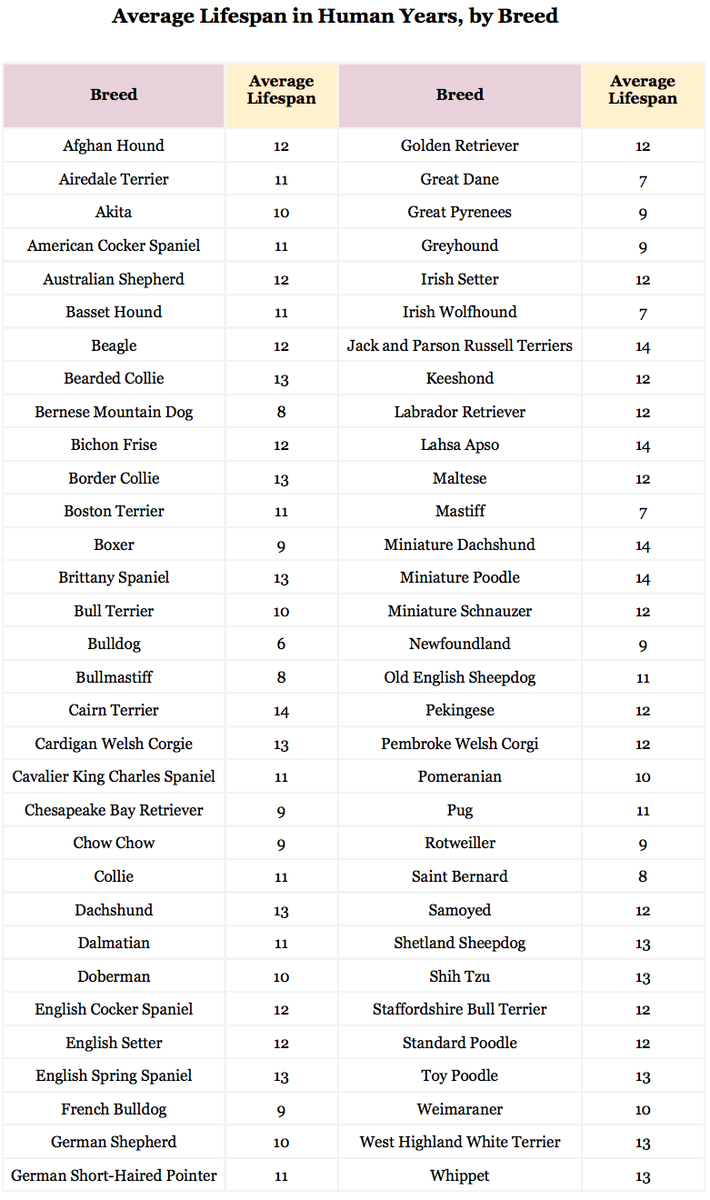
Dogs age at different rates compared to humans, but the simple rule of 7 dog years to 1 human year is far from accurate. If humans aged seven times slower than dogs, then many of us would be able to reproduce at age 7 and live to be 150. Obviously that's not the case. The reason that dogs can reach full sexual maturity after only a year is that our canine friends age faster during the first two years of their lives than humans do. Even this general statement is slightly off since smaller breeds tend to mature faster than larger breeds. Compared to humans, dogs age more quickly at the beginning of their lives and slower toward the end. Therefore, calculating your dog's age relative to yours is a bit tricky, but luckily it's possible.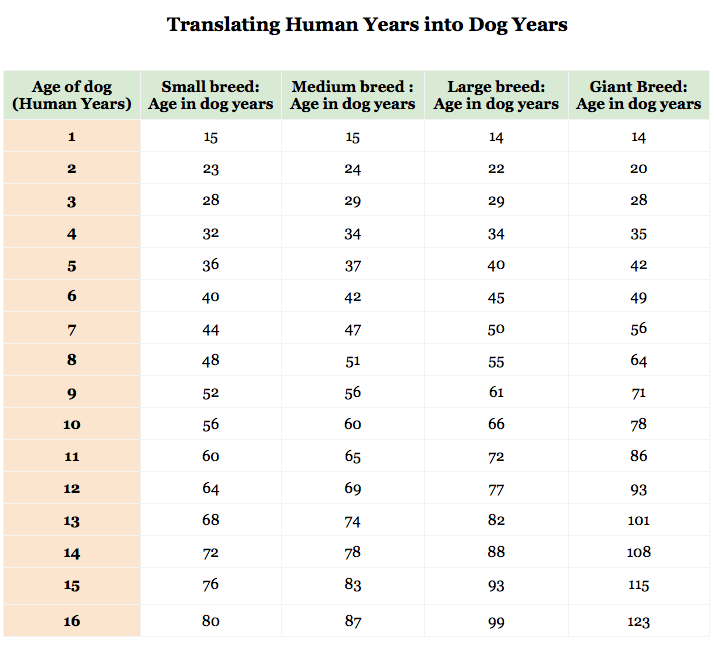
Since smaller breeds tend to live longer than larger breeds, it's important to calculate your dog's age according to the right category: small (20 pounds or less), medium (21-50 pounds), large (51-90 pounds), or giant (over 90 pounds).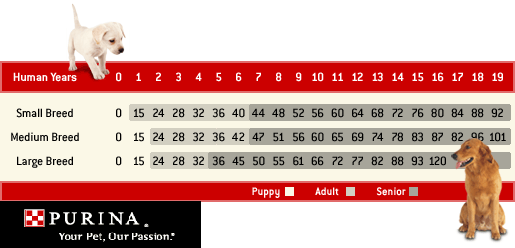
Although the origins of the seven year myth is unknown, people have been trying to find a good way to calculate dog years in human years since the 1200s. One of the earliest examples of this is an inscription at Westminster Abbey that dates to the year 1268 and calculates that one human year is equivalent to nine dog years, which was part of some strange way to calculate the end of the world in the 1200s. The seven year rule is thought to much more recent. A veterinarian at Kansas State University told The Wall Street Journal: "My guess is it was a marketing ploy. It was a way to encourage owners to bring in their pets at least once a year."
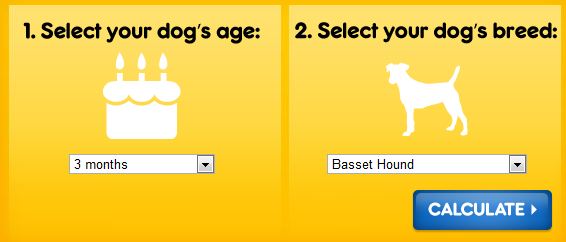
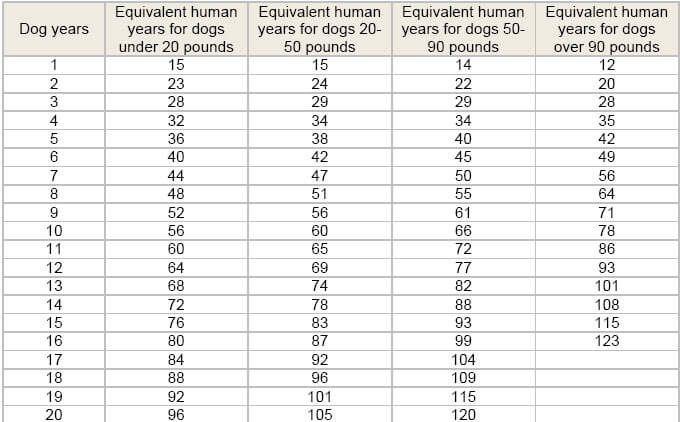

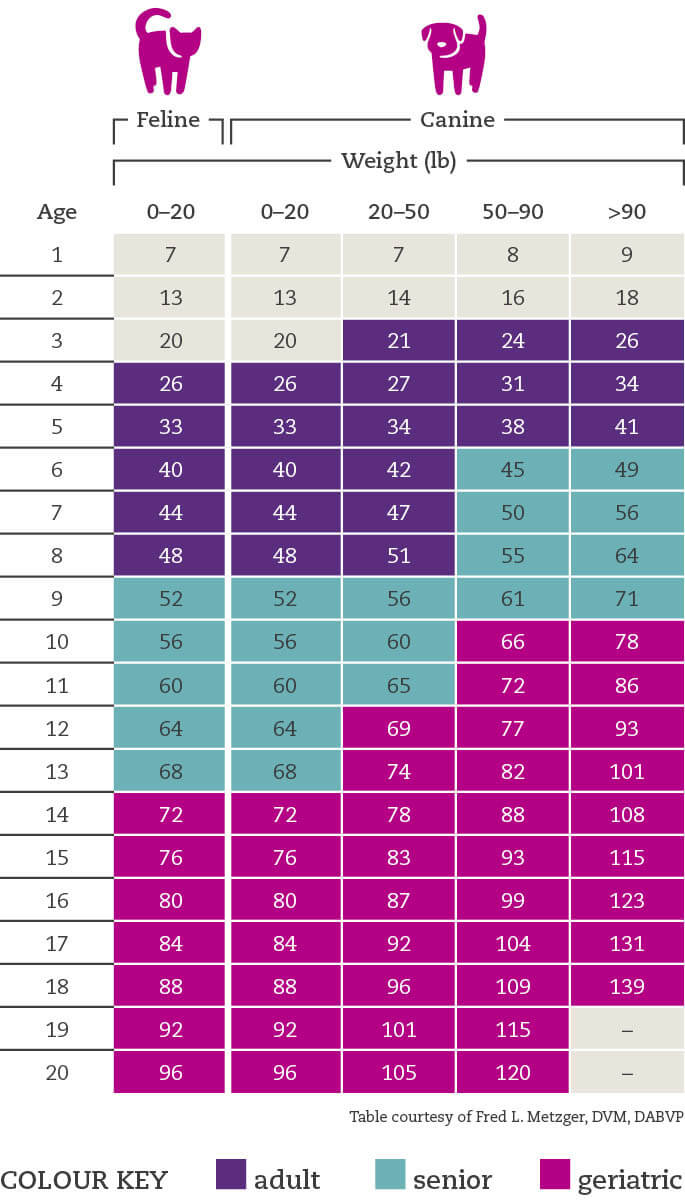
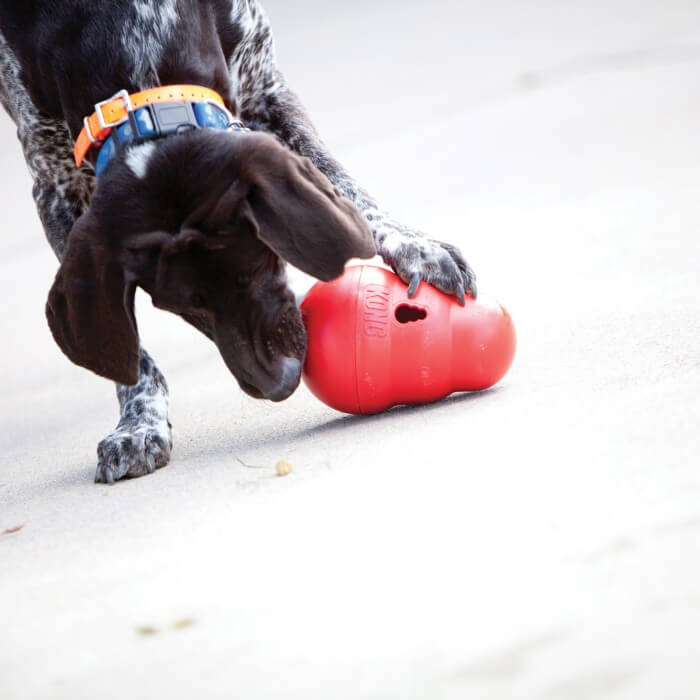
There's a KONG for Any Age.
Dogs have different play and treat needs throughout the day and throughout their lives. That's why there are so many kinds of KONG toys. Understanding these needs helps you keep your dog feeling safe and secure, which limits the chance of them reverting back to bad behaviors. Let's find out what KONG your dog needs, based on his or her age.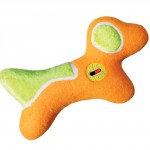
Puppies 7 to 12 Weeks - Starting Out Right.
During this stage, your puppy needs to be introduced, in a careful and positive way, to as many different situations, people, and objects as possible. This is the perfect time to increase the bond between you and your puppy and to establish good behavior. Recommended KONG Products for Puppies 7 to 12 Weeks:
KONG Puppy rubber toys are ideal for training, rewarding, and getting your puppy through that terrible teething phase.
Stuff'N Puppy Easy Treat and Stuff'N Puppy Snacks are great for stuffing puppy KONGs.
Puppy Wubba is a fun squeaky toy. Your puppy will love to play fetch and tug games with it.
KONG Plush are great snuggle toys to make your puppy feel safe.
Puppies 3 to 9 Months - My How You've Grown.
Teething is something to stay on top of during this time of fast growth. Give your puppy a variety of safe, soothing chew toys to help develop proper chewing habits. It may even save that favorite pair of shoes. At this age, your puppy may occasionally misbehave and disregard what's already been learned. Be persistent and keep up with your pet's training. Reward good behavior with KONG Stuff'N treats and continue interactive play with KONG toys. A frozen stuffed KONG puppy toy is ideal to relieve teething pains. Recommended KONG Products for Puppies 3 to 9 Months:
KONG Puppy rubber toys are ideal for training, rewarding, and getting your puppy through this continued teething phase.
Put Stuff'N Puppy Easy Treat in the grooves of a KONG Puppy Teething Stick and freeze.
Puppy Goodie Bone is a fun chew toy and treat holder that helps soothe your puppy's tender gums.
Puppy Flyer is great for interactive games of fetch with the whole family.
Puppies 9 Months to 1 Year - The Teenager.
They're not that different than the human kind of young adult. They get bored and anxious and when they do, bad things happen. But in the dog form of adolescence, KONG toys, stuffed with healthy treats, are effective tools to help prevent these problems.Recommended KONG Products for Dogs 9 Months to 1 Year:
Those strong teeth mean it's time to upgrade to a tougher rubber, so try KONG Classic or Extreme - depending on how big of a chewer you have on your hands.
Introduce your dog to new flavors of Stuff'N Snacks and Treats. Remember, they need variety just like people do.
AirDog Squeakair Balls are great for interactive play. They aren't abrasive to dogs' teeth, like normal tennis balls, so mouth and jaws stay healthy and strong.
The KONG Wubba is perfect for tugging and fetching.
Dogs 1 to 7 Years - Finally.
It's time to congratulate yourself and your dog for all the hard work, great habits, and fun. But remember that continued training is important throughout your dog's life. Rotate your dog's toys regularly to make sure he doesn't lose interest, and always leave only a few toys out at a time.Recommended KONG Products for Dogs One Year and Older in addition to products for dogs six months to one ye:
If your dog has strong jaws, upgrade to KONG Extreme.
KONG Aqua is perfect for playing fetch in the water and for retrieve training on dry land.
KONG Wobbler is a fun, entertaining, and mentally stimulating treat and food holder.
Upgrade to the KONG Classic Flyer for nonstop family fun.
Tugger Knots are tough but soft - for tugging, chasing, and fetching.
Dogs 7 Years and Up:
They Still Love to Play.
Toys and play continue to be important to your dog's health and fitness. Plus, they still crave the fun. That's why regular physical and mental activity will help your dog feel young and stay healthy.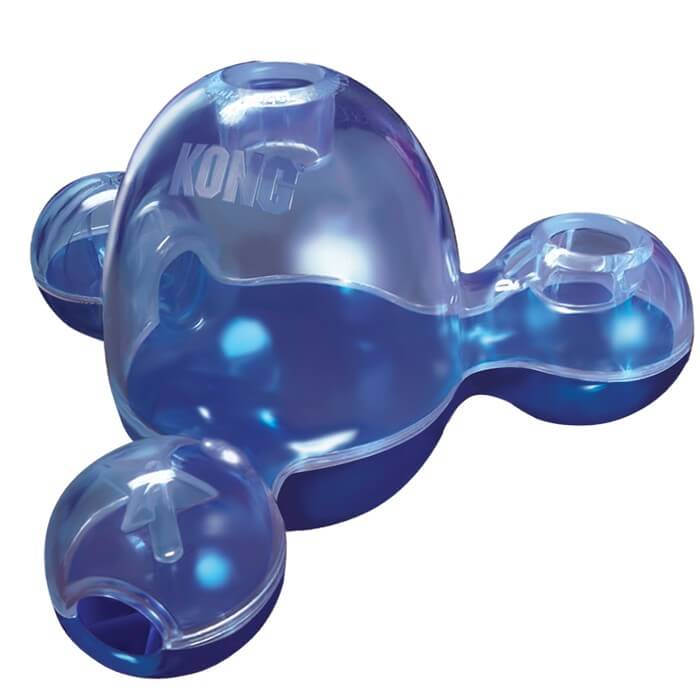
KONG's Senior range is built to give older dogs lots of mental stimulation, to encourage play and promote good exercise. KONG Senior is made from a softer rubber specifically designed for aging teeth, gums and jaws. It's gentler on a dog's mouth, enabling four-legged seniors to chew easily without getting tired or working too hard.Recommended KONG Products for Dogs 7 Years and Up:
KONG Senior is made from a softer rubber to care for senior dogs' teeth and gums.
Stuff'N Senior Easy Treat and Stuff'N Senior Snacks are delicious treats made to be easy on an older stomach.
KONG Snugga Wubba is covered with a soft, fleecy fabric - it's great to snuggle up with.
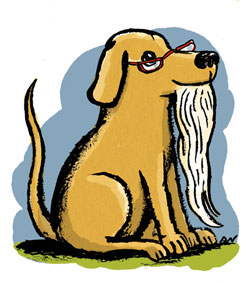
Ask your veterinary surgeon for a recommendation on the brand of senior dog food that's right for your dog.
Do consider, in consultation with your veterinary surgeon, increasing the level of fibre in the diet, especially if your pet suffers from frequent constipation.
Don't feed your dog between meal snacks or table scraps.
Take your dog to his or her veterinary surgeon for twice-yearly checkups.
Become informed about conditions and diseases common to senior dogs, be on the lookout for symptoms and, should they arise, inform your veterinary surgeon promptly.
Consider feeding a "senior" pet diet, nutritionally appropriate for the older dog and consult your veterinary surgeon on treatments for arthritis.
Consider giving two small meals a day rather than one large one.
Don't overfeed - obesity causes many health problems and may shorten your dog's life.
Make sure your dog receives adequate exercise, according to physical capacity.
Look after your dog's dental health. Brush teeth daily and have them cleaned professionally when your veterinary surgeon so advises.
Ensure vaccinations are kept up-to-date.
Do your utmost to control ticks and fleas and make sure your dog and the environment (bed, play area, etc.) are always spotlessly clean.
Give your dog lots of love and attention and do all you can to keep them interested, active, happy and comfortable.
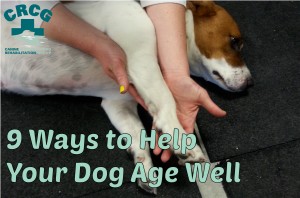
Walk Backwards
Kneel with your dog between you and a wall, put one hand under their belly to keep them from sitting - not to support their weight. With the other hand, use a treat to lure their nose to their chest and help them to move backwards or put gentle pressure on their chest if that doesn't get them to back up. Have them walk backwards a few feet, once or twice a day to help build hamstring strength.
Warm or Cool Compress
If a joint or limb seems particularly painful, place the compress on the area for 5-10 minutes to help with pain relief. For a warm compress, put rice in a sock and microwave until warm. For a cool compress, use a bag of frozen corn or peas - whatever you currently have in your freezer.
Side Steps
Stand perpendicular to your dog, place one hand on their collar (so they don't go anywhere), place your knee/leg on their flank, and your hand on the other side to keep them pressed against you. Then slowly step into your dog to get them to shift their weight away from you and take a step. Make sure to repeat on the other side.
Walk
Try to take your dog out for a walk at least once a day, even if it's a really short oneת either because of your busy schedule or your dog's physical limitations. Regular exercise helps keep bones and muscles healthy and every little bit counts - even if it's just down the driveway and back!.
Sit to Stands
Ask your dog to sit. Be sure they are sitting squarely so their back paws are facing forwards and they're not lounging on one hip or the other. Ask them to stand on all 4s from the seated position. And repeat! Doggy squats!
Diagonal Leg Lift
Gently lift the front leg and opposite back leg at the same time and hold for 3-5 seconds. Hold the wrist in front of the shoulder, and the ankle behind the hip so they can't bear weight through you they have to balance themselves. Repeat with the opposite two legs.
Couch Walks
Take a cushion off your couch and have your dog walk across, or have them stand on it while they eat dinner. This is a core exercise and will help with balance.
Trim Nails
Keep your dog's toe nails and toe fur trimmed to help with slipping and difficulty on hard floors. Throw rugs, yoga mats, and dog boots/socks with good grip can help also.
Range of Motion
Anytime your dog is relaxed, with open hands, gently guide your dog's limbs into flexion and extension to keep the joints healthy.

From bouncing baby pup to elderly matriarch, your dog will express different needs and tender a range of rewards at each stage of her life. Puppies are demanding and energetic, adolescents unpredictable. Adult dogs are eager and self-assured, and by the time they're seniors, they will have slowed to a comfortably lazy pace.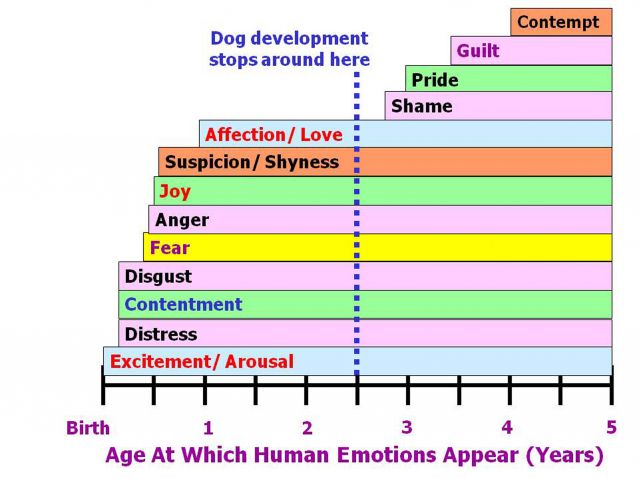
As with human relationships, ups and downs are guaranteed throughout your years together, but knowing what to expect will keep you one step ahead of the pack. During your dog's life, she will:
Upset you or, at the very least, frustrate you. Housetraining is no picnic, nor is cleaning up vomit or finding your slippers chewed beyond recognition. Even if your puppy never misbehaves, her never-ending need for you will sometimes feel overwhelming.
Surprise you. Your Australian Shepherd loves agility training. Your Doberman can bark her name. Or your Cocker Spaniel actually draws a smile from the grumpy neighbor across the street. Sometimes, you 'ןll just be astonished by your adolescent dog's endless desire to please you.
Bring you incredible joy. She doesn't care whether you made your sales goals or how good you look for your high school reunion. Your dog is thrilled simply to be around you and she'll demonstrate those feelings on a regular basis.
And probably grief. No matter how long she lives, saying goodbye to a treasured friend is difficult. If it weren't, the relationship wouldn't be worth it.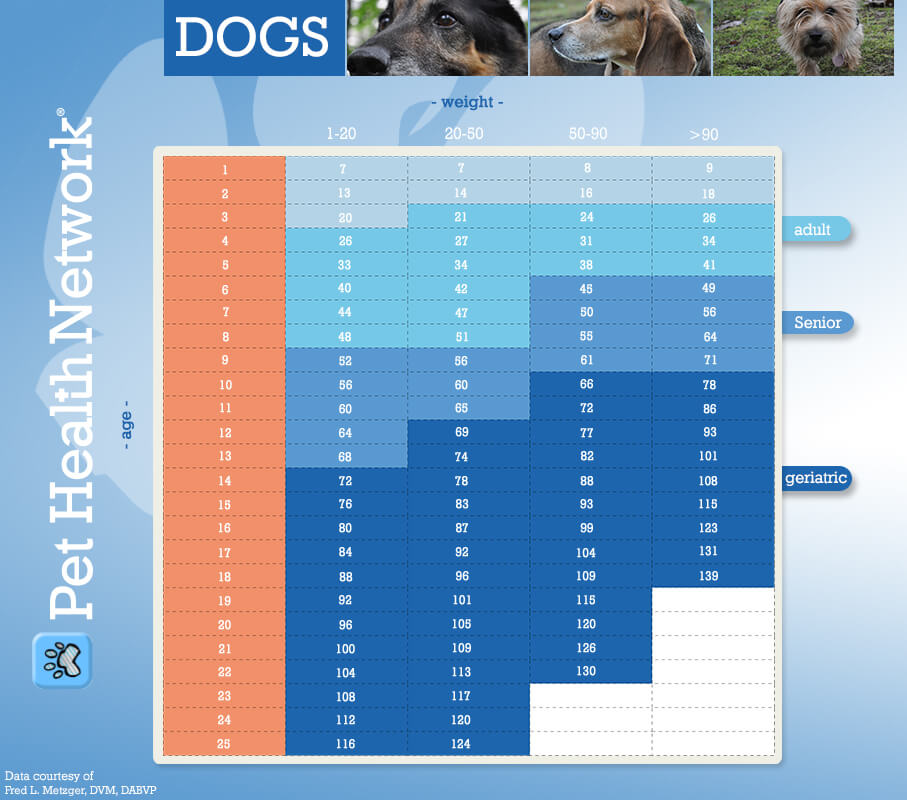
How long each stage lasts?
On average, smaller dogs mature faster and live longer than larger breeds; bigger dogs mature later and generally know shorter spans of adulthood and senior citizenship. That said, every dog develops and ages at her own rate. The following is a rough breakdown of the stages of canine life:
Puppyhood ends between six and 18 months of age.
Adolescence starts between six and 18 months of age.
Adulthood starts between 12 months and three years of age.
The senior years begin between six and 10 years of age.
Dogs are as individual as people, there's no hard and fast rule for what she'll do and when she'll do it. If you treat your dog with the love and respect she deserves, what you can count on in return is devotion, adoration, and a mistake or two along the way as the two of you learn to communicate across the human canine divide.
Dogs age at different speeds, with large dogs generally maturing more slowly than small dogs. But timing aside, they all go through the same stages: energetic puppyhood, unpredictable adolescence, the relatively smooth ride of adulthood, and the slower, lazier senior years.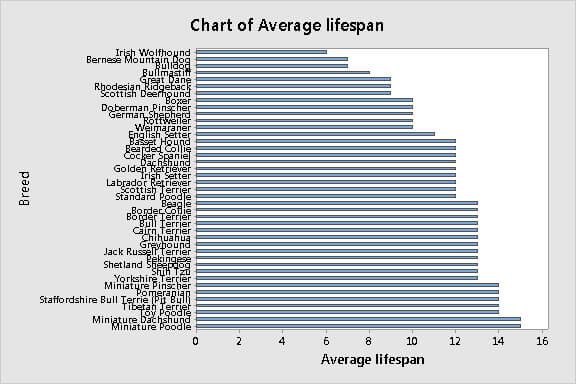
Dog life influences
Some dogs will live much longer and age much more slowly than others. Consequently, one might say for one dog that for each calendar year it ages the equivalent of 10 human years whereas another dog ages only 5 human years. The key factors that determine how long a dog will live are:
Size of dog. Generally, small dogs live much longer than large dogs. On average, small dogs have a life span 1.5 times that of a large dog. The following table illustrates this.
Breed. The breed of dog is a strong indicator of its life expectancy. In part this is related to the above factor; large breeds generally have a shorter lifespan than small breeds. However, even within the same weight category, some breeds live longer than others. For example, a Doberman Pinscher can easily reach 15 years of age and sometimes 20 despite the fact that it is a large dog - about 35 kg. or 77 poundsת whereas the smaller Boxer is shorter-lived and often does not reach 10 years of age.
Gender: As in humans, on average females live longer than males. In the case of dogs, the female generally lives one to two years longer (depending on the breed).
Neutering. Neutered dogs tend to live longer than intact dogs. This is mainly due to a reduced risk of cancer, as cancers of the sex organs are often related to sex hormones, which are greatly diminished by neutering. Current research indicates that the sooner the neutering is done the lower the risk of these cancers.
Living conditions.Dogs which are properly feed and kept, on average, live longer than those that are not. In extreme cases, much longer. Important factors are: diet, exercise, living conditions, and medical attention. See the following section Years versus Healthy Years for discussion.
Individual characteristics. Just as some people are born with a strong constitution, so are some dogs. Consequently, while one can talk about the expected lifespan of a dog based on the above factors, individual dogs will vary somewhat from this.

Spatial learning and memory were studied in dogs of varying ages and sources. Compared to young dogs, a significantly higher proportion of aged dogs could not acquire a spatial delayed nonmatching to sample task. A regression analysis revealed a significant age effect during acquisition.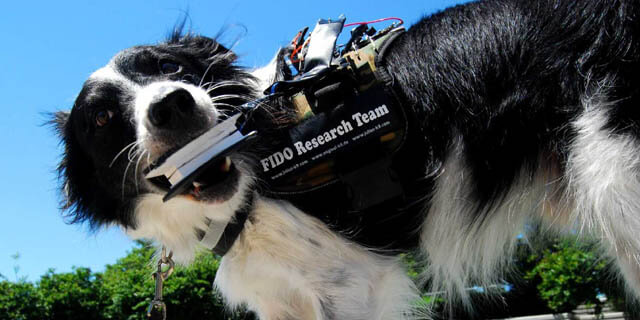
Spatial memory was studied by comparing performance at delay interval of 20, 70, and 110 s. At short delays aged and young dogs were similar - at longer delays, errors increased to a greater extent in old than in young dogs, however this was not statistically significant. It was possible to identify 2 groups of aged animals, age-impaired and age-unimpaired. Several of the dogs were also tested on an object recognition memory task, which was more difficult to learn than the spatial task. The possibility that these findings are confounded by breed differences is considered. Overall, the present results provide further evidence of the value of a canine model of aging.

Owners of older dogs are all too frequently faced with a beloved pet that seems to have issues with memory loss and confusion. Thanks to advances in commercial pet food and veterinary medicine, our dogs and cats are living longer. Surveys indicate that more than 18 million dogs are at least 7 years old. But with longevity can come the onset of age-related conditions, including cognitive dysfunction syndrome (CDS), the dog and cat version of Alzheimer's disease or dementia that develops in elderly people. Fuzzy memories can affect any breed, but these symptoms occur more frequently in dogs over age 8 and cats over age 10.
WHAT IS ALZHEIMER/DEMENTIA IN DOGS
Not all dementia has an anxiety component to it and not all anxiety in older dogs is from dementia but the two often go together. So what causes dementia in older dogs?
There are four main causes of dementia or cognitive dysfunction syndrome:
1. Free radical formation Free radicals harm healthy cells in the brain.
2. Hypoxia to the brain In other words there is not enough blood getting to the brain.
3. Alterations in neurotransmitters There is too much or not enough of certain necessary neurotransmitters in the brain. You need neurotransmitters to have your neurons or brain cells function together.
4. Neural infiltrates such as B amyloid and lipofusion These infiltrates destroy healthy brain tissue, similar to alzheimer's disease in people.
HOW TO KNOW IF YOUR DOG
HAS ALZHEIMER?
Pets with memory loss may exhibit one or more of the following symptoms:
Disorientation and confusion. Does your pet wander aimlessly, get lost in the house, or stare at the walls?
"Forgetting" himself and you too. Does your pet seem to forget his name, walk away while you pet him, or stop greeting you when you come home?
Sleeping difficulties. Is he waking in the middle of the night? Is he sleeping more during the day?
Housetraining lapses. Does he urinate or have bowel movements in your home minutes after being outside?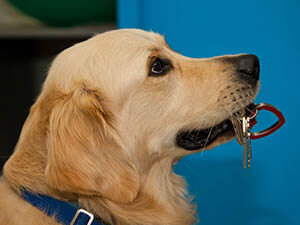
Unfortunately, CDS in many dogs and cats goes undiagnosed, because their owners just assume that old age, and not a medical condition, is what's causing the unusual behavior. Even within a veterinary clinic, the condition is generally tricky to diagnose. Veterinarians must rely on a senior pet exam that includes performing blood and urine tests and taking a detailed behavioral history to rule out other possible medical conditions.
HUMAN DRUG HELP
Until a few years ago, veterinarians lacked any medication to control the clinical signs of CDS and extend the quality of life in afflicted dogs. In late 1998, the FDA granted approval for Anipryl (selegiline hydrochloride), a medication that's marketed by Pfizer. To test the effectiveness of Anipryl, 641 dogs ages 8 or older from 236 veterinary clinics across the US were recently studied. Owners were asked to evaluate their dog's overall actions after being on the medication for 1 month and then 2 months. By day 60, 77% of owners reported improvement in their dogs, says Sharon Campbell, DVM, a veterinarian board certified in internal medicine, who manages research for Pfizer. Currently, there is no other approved medication to treat CDS in dogs. In the past, the emphasis has been on making sure that puppies get all their necessary vaccinations, but both pet owners and veterinarians need to pay more attention to the needs of our senior pets.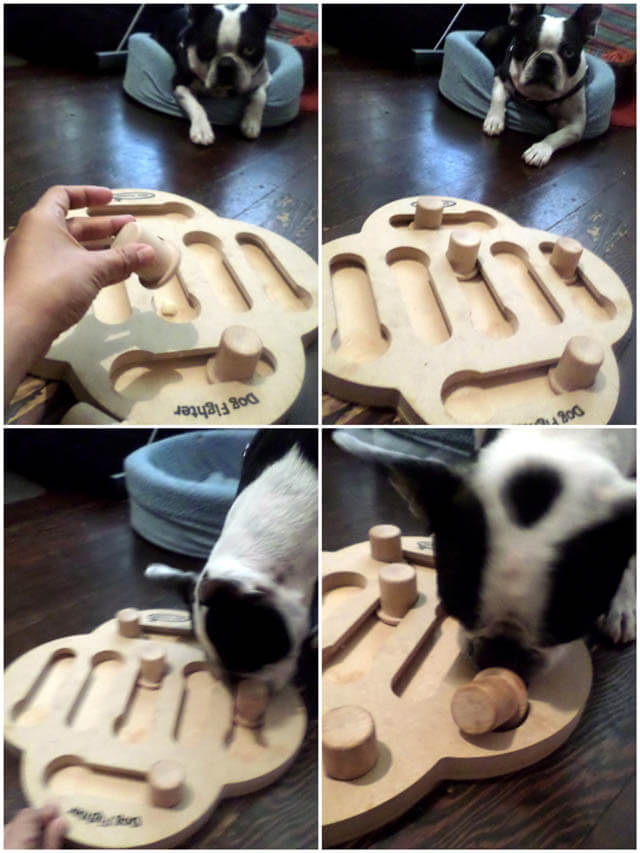
Anti-aging Advice
You can't stop the number of birthdays your pet has, but experts say you can take steps to keep your dog or cat feeling youthful even as they approach their senior years.
Consult your veterinarian
Select the right commercial food that meets your pet's nutritional and health needs. Remember that the diet may need to change as your pet ages. Also, be sure to schedule a geriatric exam when your dog turns 7 and your cat turns 8.
Keep your older dog mentally stimulated
By playing a game of hide and seek with food treats in various rooms of the house or playing a game of "go fetch the biscuit." Toss a toy mouse, or encourage your older cat to play with a toy feather wand to hone her natural stalking skills.
Reinforce basic commands
By having your dog "sit" before getting a treat or "come" when you are in one room and he is in another. Take your older dog for shorter but more frequent walks on smooth surfaces that aren't jarring to his joints. Vary the route to expose him to new surroundings.

Dementia and anxiety are some of the most frustrating and painful problems I see in older dogs and can be very difficult to deal with. Be gentle on yourself and your dog companion and try to find a healthy way to work with these problems for everyone in the household.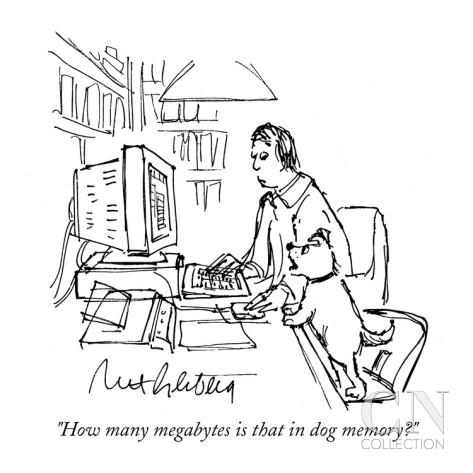
In Traditional Chinese medicine or TCM, anxiety in older animals is caused by too much heart fire related to the kidneys becoming deficient as your dog ages. Kidneys are considered to be the water element and as we age the kidneys get deficient and water in the body system decreases to a point that it allows heart which is a fire element to flare too much and cause anxiety especially during the heart peak hours of 11pm - 1am.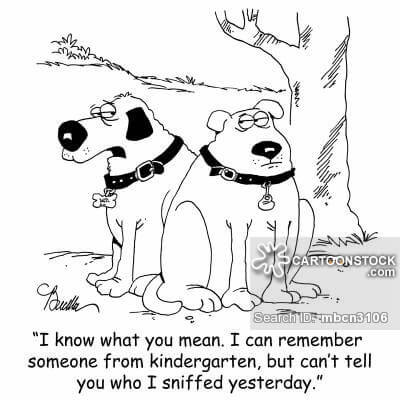
According to TCM, another issue is that older animals can become what is called yin deficient. Yin holds the yang at night so we can sleep. If there is not enough yin, the yang is not held and sleep doesn't happen. Sometimes these problems are reversible but even when they are not, there are things you can do to help prevent the problem from getting worse and help with symptoms.
Here is a list of some things that can help your older dog with dementia or anxiety. Please check with your veterinarian to come up with a plan that is safe for your dog.
1. Walking is the most important thing you can do for your older dog. Walking just ten minutes twice a day can significantly increase brain blood flow and reverse symptoms of dementia from hypoxia. Plus it can help prevent muscle atrophy and help with arthritis.
2. Ginkgo does three important things. It helps increase blood flow to the brain by vasodilation , it helps regulate dopamine in the brain and it helps prevent amyloid deposits. I dose ginkgo at 100mg per 50lb of dog.
3. Fish Oil and other antioxidants help prevent and repair free radical damage and stimulate brain function. In addition Fish Oil also help with arthritis and dry coat problems in older dogs. I dose Fish Oil at 500mg per 40 lb of dog. Extra vitamin B and E can also help these dogs.
4. SamE helps increase dopamine function in the brain, stimulates brain function and works as an antioxidant. It also helps with joint pain and liver function which many older dogs have problems with. I dose SamE at 500mg per 50lb of dog.
5. Remove any compact fluorescent or fluorescent lighting. Fluorescent lighting can cause a high pitched hum that humans can not hear but dogs and cats can. Older dogs loss their high frequency hearing last so even almost deaf dogs can still hear very high frequency noises. In addition fluorescent lighting can affect brain function and can cause headaches. See The danger of compact fluorescent lighting.
6. Get rid of the dry food. Many older dogs do better on home cooked food or canned food. I don't recommend switching an old dog to raw food if they have not been on it before. From a Chinese medicine view, dry food is too processed and dry for an older dog who already is kidney deficient.
7.Wearing a T-shirt, Thundershirt, or Anxiety Wrapcan help your older dog if they have problems with anxiety. It sounds weird I know, but it actually does work. It is based around the ideas from Tellington TTouch of using an ace bandage. See the article Put an ace bandage on my dog?. Wearing the shirt enhances your do's sense of their own body and makes them feel more confident in their movements and behavior. You can use a snug fitting human T-shirt, a Thundershirt, or an anxiety wrap. I have found however that if your dog has a lot of arthritic pain the anxiety wrap is too hard to put on, so try the Thundershirt or a T-shirt in that case. This is also an idea that can work in young dogs with anxiety.
8. Melatonin can help old dogs sleep at night. Sometimes older dogs can get confused between night and day and end up sleeping all day and then pacing and panting at night. This can make it very hard for us humans to sleep also. Giving Melatonin in the evening can help regulate night and day for these guys and get everyone a better night's sleep. I dose Melatonin at 3-4mg per 50lb of dog.
9. Small meals more often and right before bed are sometimes better for these older dogs. A small meal of wet or cooked food right before bedtime can help get these dogs through the night and help them sleep better.
10. Acupuncture can help decrease anxiety especially at night time by treating the yin, kidneys, and heart fire. In addition acupuncture can help with arthritis pain, weakness, and kidney function and help your dog age more gracefully as they get older. I often combine acupuncture with Chinese herbs for these dogs.
11. Reiki can help to relax older dogs and calm anxiety. Reiki is a nice calming way of helping improve health and well being as animals age.
12. Rescue Remedy and other flower essences can help with anxiety and fear. Flower essencesare homeopathic in nature and very safe for older animals. Rescue Remedy is the best know but there are many lines for treating a variety of behavior and emotional issues.You can dose flower essences by putting 3-4 drops in your dog's drinking water every time you change their water. It is ok to use flower essences in the water even if other animals drink from the same dish.
13. Other herbal medicationsare out there for helping with anxiety in older dogs. I recommend consulting with a holistic veterinary to decide on what is right for your dog.Many of the most calming herbals like valerian or kava kava can be very dangerous if used incorrectly or in the wrong animal. To use Chinese herbs correctly you should consult with a veterinarian with a background is Chinese herbal medicine or Traditional Chinese Medicine.
14. Western Drugs are always an option. There are may drugs that help with anxiety and can be given if the natural alternatives do not work or are not enough. There are also drugs out there that help with dementia such as Selegiline (Anipryl). Most of the western drugs like the herbs are not cure alls but can help make things better.
15. Some dogs are anxious because they are painful. This is an important thing to rule out before assuming there is a dementia component.If your dog is not on pain medication have them evaluated by your veterinarian. If they are on pain medication talk to your vet about increasing the dose or trying something else if there may be a pain factor. Dogs ca not always tell us when they are in pain and pain certainly can cause sleep disturbance and anxiety.
16. Talk to your dog about the change in their position in the house. Many dogs especially the herding breeds take their job of watching the house very seriously. As they get older and can not do it the way they would like to anymore they can become quite anxious. Explaining that your accept them in their old age and making changes to help them, can ease anxiety. See the article Love me for who I am today.
17. Take care of yourself! This is very important when you are caring for an elderly or sick animal. To be a good caregiver you need to be healthy and well rested.If you have a dog that is anxious at night and you are not sleeping consider putting them in a different room than you sleep in, crating them if they are ok with crating, or finding another solution. If you get sick because you are not taking care of yourself you will not be able to care for them.It may seem mean to kick them out of your room but it is kinder than letting them sleep with you and being a grumpy caregiver. I had to do this with my old dog Jake and it actually ended up with us both sleeping better. Before we slept in separate rooms, his anxiety made me anxious, which made him more anxious and by the morning we were both a mess.


